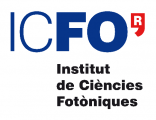OSA Blog did a spontaneous highlight of our upcoming presentation at OSA Biomedical Topical meeting in Miami. The paper about this presentation was also just published at BOE.
Original by Ken Tichauer on Tue, Mar 25, 2014 @ 04:52 PM
We’ve all experienced that “salt-and-pepper”, or white noise when our favorite television show cuts out on us. Well it turns out that similar “speckle” patterns are also seen when projecting laser light onto biological tissue, owing to interference patterns of the monochromatic light source. Now you might say, “so what!” and that’s probably what most would say. However, in the early 1980’s Fercher and Brier realized that movement of blood could disturb the laser speckle pattern, and this disturbance could be used to estimate blood flow [1].
In the decades following this breakthrough, Laser Speckle Imaging has been employed to visualize blood flow in the skin [2], the retina [3], and brain [4]. To date there are over 600 published articles that have included biomedical applications of Speckle Imaging. Why so popular? There are certainly many other approaches available for monitoring blood flow such as Doppler ultrasound, laser Doppler, and a slew of dynamic contrast enhanced imaging modalities. However, none of these approaches can offer the exquisite temporal resolution (milliseconds), and spatial resolution (10s of microns) that can be attained by Laser Speckle Imaging. And nowhere have these advantages been used to greater benefit than in the study of “neurovascular coupling”, which necessitates the ability to resolve the interplay between neuronal activity and blood delivery in the brain at the millisecond and micron resolution scales only offered by Speckle Imaging.
Very exciting, no doubt; however, the major limitation with Speckle Imaging has been its severely limited depth resolution. Flow estimations have typically only been from very superficial blood vessels, vessels that some argue are not involved in feeding active neural networks. It seems that is all about to change though with what I believe to be very high-impact work coming out of a collaboration between Prof. Turgut Durduran at The Institute of Photonic Sciences in Barcelona, Spain and Prof. Joseph Culver at Washington University in St. Louis. Profs. Durduran and Culver are reporting the first-ever tomography application of Speckle Imaging, capable of mapping blow flow in three dimensions. They have aptly coined the approach SCOT: Speckle contrast optical tomography, and you can catch the unveiling of this work by Dr. Hari Varma on Wednesday afternoon at OSA Biomed in the section: Diffuse Optics Novel Methods. Don’t miss it!
1. Fercher, A.F. and J.D. Briers, Flow Visualization by Means of Single-Exposure Speckle Photography. Optics Communications, 1981. 37(5): p. 326-330.
2. Ruth, B., Measuring the steady-state value and the dynamics of the skin blood flow using the non-contact laser speckle method. Med Eng Phys, 1994. 16(2): p. 105-11.
3. Yaoeda, K., et al., Measurement of microcirculation in the optic nerve head by laser speckle flowgraphy and scanning laser Doppler flowmetry. Am J Ophthalmol, 2000. 129(6): p. 734-9.
4. Dunn, A.K., et al., Dynamic imaging of cerebral blood flow using laser speckle. J Cereb Blood Flow Metab, 2001. 21(3): p. 195-201.
A future scientist?

Image credit: Early 1950s Television Set Eugene Oregon.jpg John Atherton / CC-BY-SA-3.0 / GFDL v.1.2 or later

